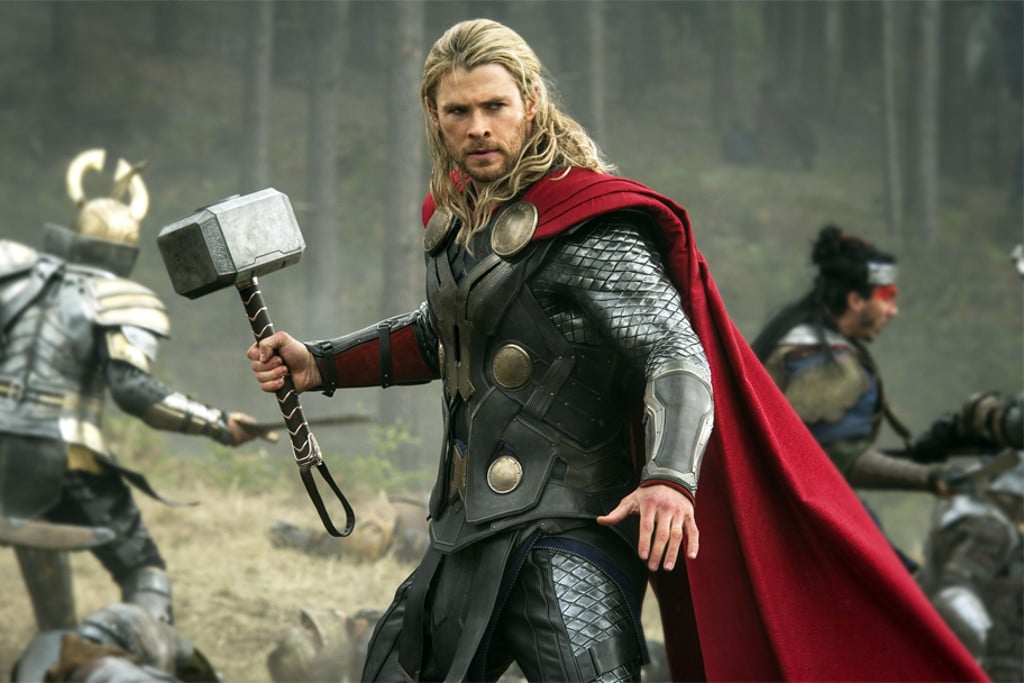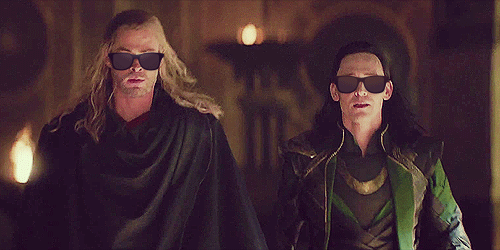Is Thor: The Dark World As Much Fun As The Original? Nope!
It has its moments, though, and they pretty much all involve Kat Dennings.

To date, 2011’s Thor was Marvel Studio’s riskiest venture. No one really knew what would happen when it came out: Kenneth Branagh, most famous for directing Hamlet (1996), takes the reins of a sci-fi fantasy film in which its two relatively unknown leads (Chris Hemsworth and Tom Hiddleston) speak in mock Shakespearean English. And not just that, it’s possibly the most comics-steeped film Marvel or any other studio had ever released. While the superhero boom of the 2000s had been predominantly more realist — Singer’s X-Men series, Raimi’s Spider-Man, Nolan’s The Dark Knight, and Favreau’s Iron Man — Thor was pure unadulterated geeky pulp.
The great risk that paid off
Created by Stan Lee, Larry Lieber and Jack Kirby in 1962, Thor’s a god hybrid of the hypertrophied fantasy paperback heroes of the ’30s mixed with Edgar Rice Burroughs-style space opera. He lives in a floating city with an intergalactic rainbow bridge (in comic panels, it looks exactly like it sounds), watches over the nine realms, and fights frost giants and trolls while coexisting with nebulous concepts like the Odinforce, Odinsleep and continual questions of being ‘worthy’. Also, Thor plainly lacks the pop cultural currency of say a Superman or Spiderman. Yeah, Thor comics have a fan base, but Marvel couldn’t kid themselves that fanboys alone would be able to ward off a potential box-office flop.
Surprisingly, the risk paid off: Thor made over $400 million worldwide and earned itself a 77% fresh rating on Rotten Tomatoes. It established Thor and Loki for their roles in The Avengers, as well as setting up cosmic concepts like the tesseract, instantaneous intergalactic travel, and, you know, aliens. It told the studio in giant floating dollar signs that Marvel’s full universe was open game. If you can make a Thor film, you can pretty much make anything, and audiences will be seeing that run-on effect in the very near future with 2014’s Guardians Of The Galaxy (which is brilliantly alluded to in Thor: The Dark World’s post-credits teaser).
If Thor was such a success, why does Thor: The Dark World sit so uneasily?
For all the risks it took to make the original, Thor’s sequel doesn’t feel groundbreaking at all. It feels derivative, and in a time where audiences and critics are starting to become fatigued with superheroes (and to an extent fantasy films — note the apathy towards Peter Jackson’s The Hobbit), this isn’t good.
While Thor‘s lack of originality lies in its source material — he’s a collection of fantasy, sci-fi and superhero tropes — in The Dark World, it painfully shows. I don’t mean to say that a Thor fantasy-adventure film couldn’t work, but by God it should have the sense not to open with a sequence that plays out almost exactly like the start of Lord Of The Rings (you know, just narrated by Anthony Hopkins instead of Cate Blanchett). This isn’t helped by the fact that Svartalfheim, home world of the villainous dark elves, seems identical to Rings‘ Mordor: it has the same colour palette and all, only differentiated by the ruins of a few spaceships and a lack of volcanoes. In fact, the plot as a whole — driven by the evil (and largely unseen) Malekith’s (Christopher Eccleston) hunting for the Aether, a mysterious super weapon with the potential to destroy the universe — could easily be substituted with Sauron and the One Ring.
Nine worlds, and you’ll care about none of them
The film’s problem aren’t in its characters. Chris Hemsworth’s portrayal of Thor (including his dialogue) is genuinely interesting , and Tom Hiddleston’s Loki is still consistently brilliant. Likewise, the film’s climactic action set-piece refrains from showing the wanton obliteration of an inhabited city (yay), as so many recent blockbusters have. Instead, it’s inventive and entertaining, especially the fluid and varied use of Thor’s hammer, Mjolnir, and the Dark Elves’ dark matter-powered weaponry.
The Dark World also deserves credit for the balance it achieves between the seriousness of its gods’ conflicts and the utter ridiculousness of watching a flying Viking with a giant hammer. It’s self-conscious, without lapsing into parody — in other words, a true comic book film. This, while DC goes dark, is itself a unique selling point for the franchise, especially as it allows the film to play with fantasy elements, too: Earth’s humans — particularly Two Broke Girls‘ Kat Dennings — give the film a source for fun and welcome humour.
While these factors save The Dark World from being mediocre, they also make the final product all the more disappointing. When the film breaks away from expectations and takes risks (like the first film did), you see the true potential of a Thor movie. But rather than giving viewers something new (something Thor’s backlist of comics could surely offer), Marvel’s latest release feels like watching characters go through the motions of something you’ve seen too many times before. It leaves you completely uninterested in Thor’s nine worlds, which is really a shame. You should want to know more. You should want to visit them. But you don’t.
–
Thor: The Dark World is now showing in cinemas nationally.
–
Paul Dalla Rosa sub-edits fiction for Farrago Magazine, co-hosts ‘The New Pollution’ podcast, and reads too many comics. Find him on twitter @PaulDallaRosa
